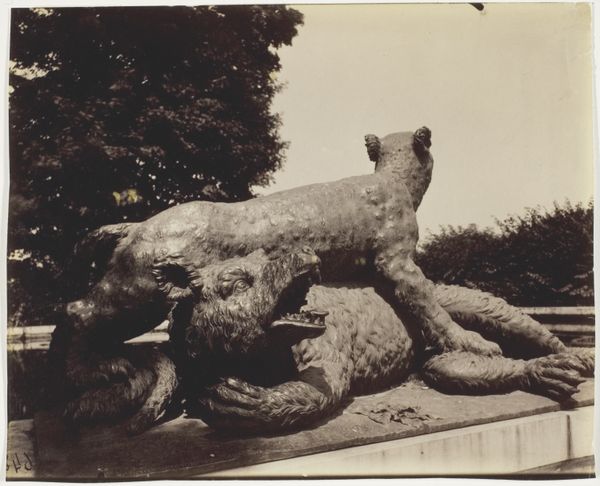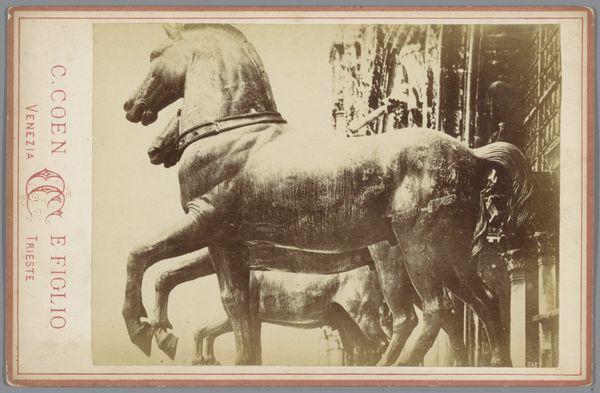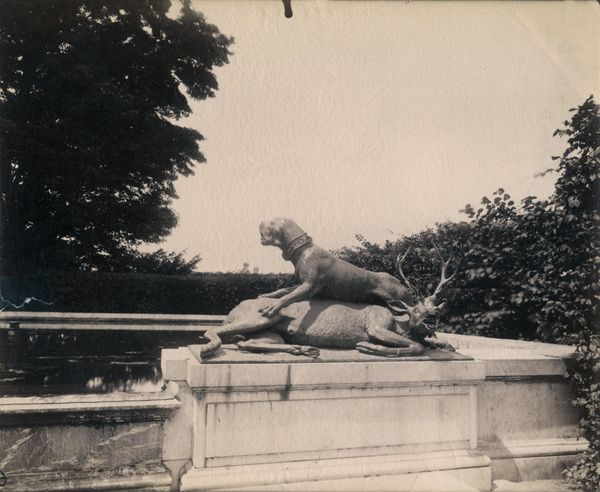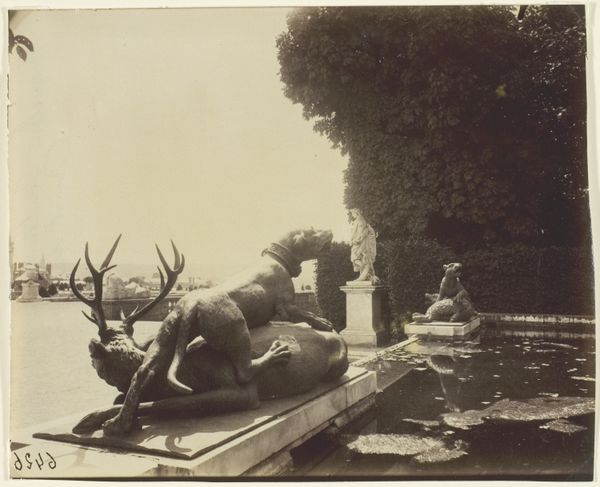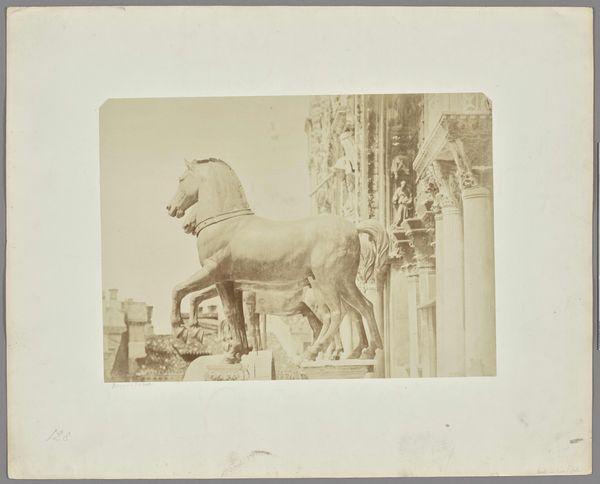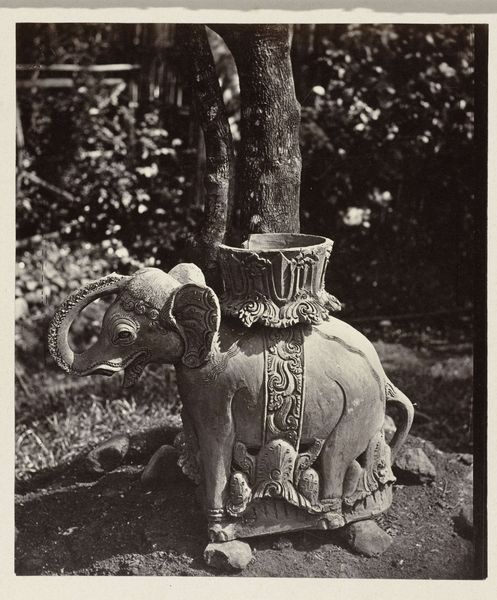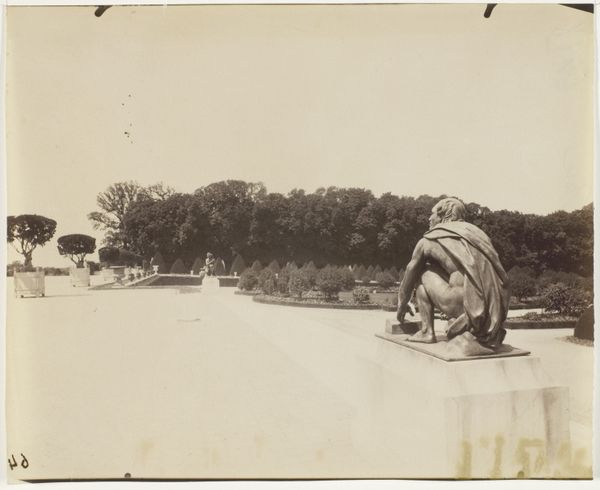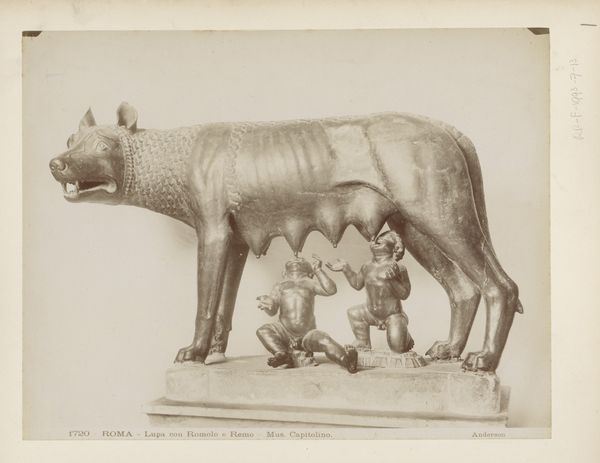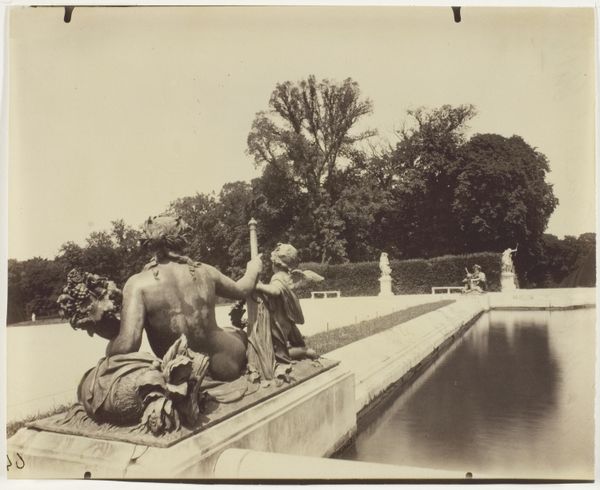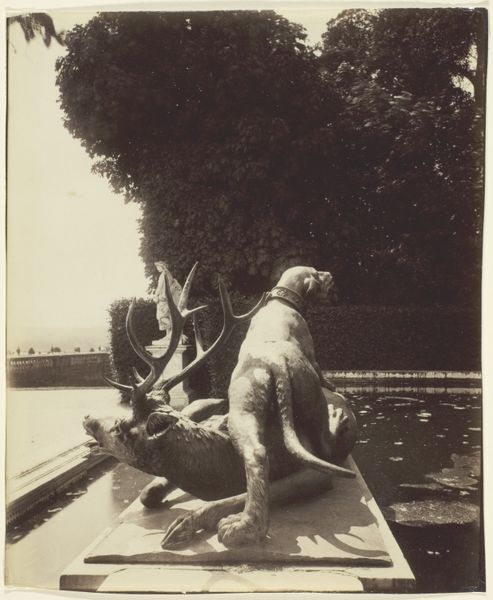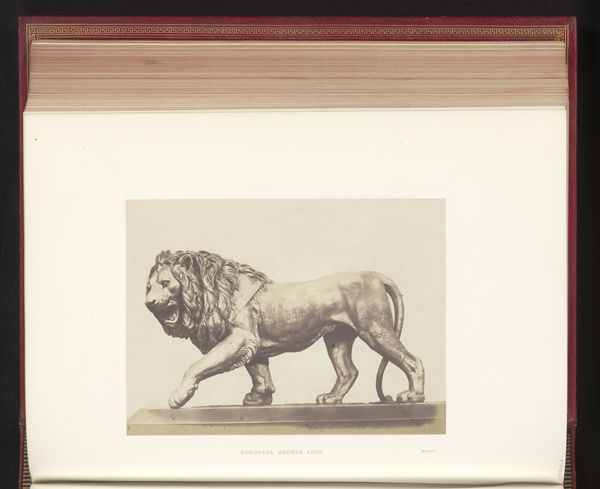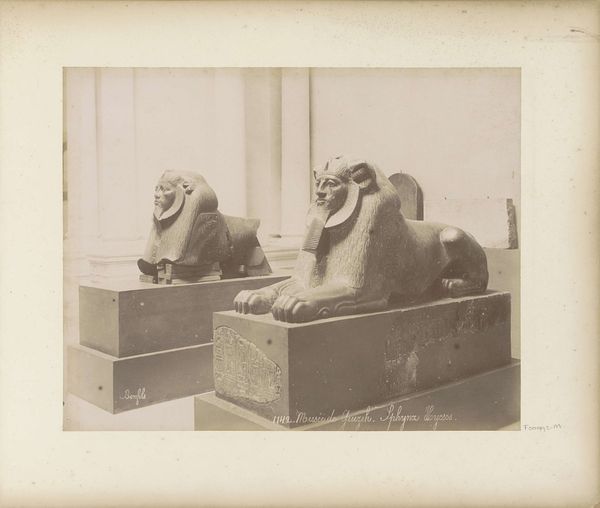
print, photography, sculpture
#
print photography
# print
#
landscape
#
archive photography
#
photography
#
sculpture
#
france
#
academic-art
Dimensions: 17.5 × 21.9 cm (image/paper)
Copyright: Public Domain
Curator: The photograph before us is titled "Versailles, Fontaine de Diane (Detail)" by Eugène Atget, created around 1901. It’s currently housed right here at The Art Institute of Chicago. Editor: It has a strikingly mournful quality, doesn't it? The tones are subdued, and the light seems to highlight the rough texture of the sculpture. You can almost feel the grit of the stone. Curator: Absolutely. Atget was a master of documenting the disappearing aspects of Old Paris and its surroundings. His photographs weren't just aesthetic exercises, they were created, in his mind, as documents, even sold as source material for other artists. Editor: It's interesting that he saw his work as documentation. The light feels deliberate; it exposes the wear on the sculptures while the tight composition focuses our attention on these lions locked in a brutal struggle, rather than the opulence of Versailles. The material speaks of age, of labor, of time. Curator: Versailles itself is so potent in French cultural history. The location became an integral tool in projecting the monarchy's might. By focusing on this somewhat secluded, almost forgotten corner of the grounds, Atget’s photograph invites reflection on the relationship between power, decay, and memory. Editor: And what is that relationship? The worn lion and defeated wolf imply themes of mortality or faded glory more profoundly than the usual depictions of noble extravagance that we typically associate with the royal estate. Curator: Precisely. It’s a commentary on the fleeting nature of empires. The photograph acts almost as a memento mori within the grand narrative of Versailles. I suspect he knew the importance this imagery would gain over time as culture itself changed and shifted away from its Academic traditions. Editor: The mechanical process of photography allows for infinite reproductions, disseminating the story that Atget found crucial. It brings a slice of royal materiality directly to the hands of the masses, divorced from its origins, begging new narratives to emerge. Curator: I agree; Atget, working outside the art establishment, still managed to produce enduring work. It’s a testament to the power of observation and the ability of photography to democratize access to important cultural spaces. Editor: This photo invites one to contemplate not just what is depicted, but also how it has survived and been circulated across time and culture. It’s a testament to its own layered history.
Comments
No comments
Be the first to comment and join the conversation on the ultimate creative platform.

